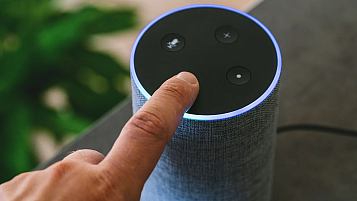For billions of people around the world, life at home has taken on a new significance this year. Flats and houses have become workplaces, gyms, schools and living spaces all rolled into one by national lockdowns.
It has also meant that many of us are spending more time than ever with the gadgets we have welcomed into our homes – so-called “smart” devices connected to the internet that can be controlled with our voices or via apps on our phones.
From virtual assistants like Amazon’s Alexa, Apple’s Siri and Google Home, to smart light bulbs, kettles, security cameras and thermostats, they are collectively known as the Internet of Things (IoT). Many of our household appliances now come embedded with sensors and the ability to connect to wireless networks, allowing them to gather data about how we use them, and communicate with other devices in our homes.
In 2017, there were an estimated 27 billion IoT connected devices and this network is expected to grow by 12% every year to reach more than 125 billion devices by 2030.
The hope is that smart devices can save us time and effort in the home by helping us digitise and automate our lives. It is hard not to enjoy the convenience of requesting a world news update, turning lights on and off with a simple command, or having a thermostat that can learn by itself when to heat your rooms based on your daily movements.
They are designed to make our lives more convenient, save us time and keep us safe.
Take the internet-connected video doorbells that many people now have beside their front door. They make it possible to see who has come to call and even talk to them without having to open the door and risk exposure to the coronavirus. Automated devices inside the home, meanwhile, reduce the risk of viral transmission. According to the global technology market firm ABI Research, the sales of smart devices is set to increase by as much as 30% (compared to the same time last year) as a result of the coronavirus outbreak. “A smarter home can be a safer home,” a research director at ABI Research recently said.
But there are some who fear smart devices like these may actually pose a risk to the very people who share their home with them – that these tools of convenience are being turned into weapons of domestic abuse.
Technology is providing new opportunities for abusers to control, harass and stalk their victims
Although there are many ways abuse and control can manifest in households, technology is providing new opportunities for abusers to control, harass and stalk their victims. The mobile phone, in particular, can provide a way of tracking and monitoring the activity of a partner or a child without their consent or knowledge. A 2018 study by researchers at Cornell Tech in New York even found that the developers of apps designed to track devices seem to expect them to be used in this way. When they asked 11 companies who had developed “child safety” or “find my phone” apps if their product could be used to “track my [partner’s] phone without them knowing”, eight replied to say they could.
With a growing number of devices in our homes capable of gathering data about our movements and daily behaviour, the Internet of Things has the potential to transform how this sort of technology-enabled abuse can take place. Internet-connected video doorbells and cameras make it possible to watch what someone is doing from anywhere in the world. Sensors on doors can reveal when someone leaves the house, while the use of lights with smart bulbs can show their movements between rooms.
Internet-connected locks can restrict movements into certain rooms or even keep someone from leaving their home. Voice-controlled virtual assistants can provide a detailed breakdown of questions it has been asked and search history, personal data that can easily bring relationships into conflict.
These systems also tend to require an administration account, which gives a single person in a household a password-protected way to control the system. Put all these aspects together it seems like smart homes are inadvertently built to allow one person to control and monitor the life of another.
